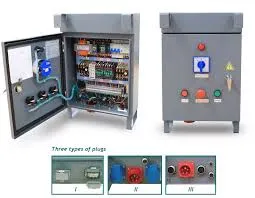The Versatility of Butyl Tape A Comprehensive Guide
When it comes to ensuring a secure seal, whether in construction, automotive applications, or DIY projects, butyl tape stands out as a reliable solution. This rubber-based adhesive tape is renowned for its exceptional sealing properties and versatility. In this article, we will explore the characteristics, applications, and benefits of using butyl tape, particularly in conjunction with rubber glue.
What is Butyl Tape?
Butyl tape is a type of adhesive tape made from a synthetic rubber compound known as butyl rubber. It is designed to create airtight and watertight seals, making it an ideal choice for both indoor and outdoor applications. The material is highly flexible and can adhere to a variety of surfaces, which adds to its fundamental appeal.
Characteristics of Butyl Tape
1. Weather Resistance One of the key attributes of butyl tape is its ability to withstand various weather conditions. It does not degrade easily under UV exposure, heat, or moisture, making it suitable for outdoor uses.
2. Adhesion Butyl tape exhibits superior adhesion properties. It can bond effectively to many surfaces, including metal, glass, wood, and some plastics. Its sticky nature allows for an easy application, reducing the need for complicated installation processes.
3. Flexibility The flexibility of butyl tape allows it to conform to irregular shapes and surfaces, which is a significant advantage in construction or repair work where surfaces may not be completely flat.
4. Sound and Vibration Dampening Butyl tape also offers sound dampening properties, which can be beneficial in automotive applications or construction where noise reduction is desired.
Applications of Butyl Tape
Butyl tape is widely utilized across various industries for numerous applications
1. Roofing In roofing applications, butyl tape is frequently used to seal joints and seams, providing a robust barrier against water intrusion. Its weather resistance ensures long-lasting performance.
butyl tape rubber glue

2. Automotive In the automotive industry, butyl tape is often used for sealing windshields and doors, as well as for soundproofing purposes. Its ability to dampen vibrations makes it a preferred choice for enhancing the comfort of vehicle interiors.
3. HVAC Systems Butyl tape is effective in sealing ductwork and other components in HVAC systems, ensuring that air leaks are minimized and energy efficiency is maximized.
4. General Construction From sealing windows to adhering insulation materials, butyl tape is commonly used in a range of construction applications.
Combining Butyl Tape with Rubber Glue
For enhanced bonding capabilities, especially in demanding environments, combining butyl tape with rubber glue can yield optimal results. Rubber glue can reinforce the adhesion of the tape and create a more formidable seal. This combination is particularly useful in scenarios where added strength and flexibility are required.
Benefits of Using Butyl Tape
- Ease of Use Application is straightforward, requiring minimal tools. It can be easily cut to size, making it user-friendly for both professionals and DIY enthusiasts.
- Cost-Effective The longevity and durability of butyl tape reduce the need for frequent repairs or replacements, making it a cost-effective option in the long run.
- Environmental Impact Many butyl tapes are manufactured with environmentally friendly processes and materials, adding to their appeal for eco-conscious consumers.
Conclusion
Butyl tape is a powerful tool in the arsenal of any builder, repairer, or DIY enthusiast. Its combination of versatility, durability, and ease of use makes it an indispensable choice for a wide range of applications. When paired with rubber glue, butyl tape can provide even greater sealing strength, ensuring that projects are not only completed efficiently but also with lasting results. As industries continue to evolve, the importance of effective sealing solutions like butyl tape remains undeniable, paving the way for innovative applications in the future.
-
XIANGFAN Rubber Tape-Ultimate Solutions for All Your Insulation NeedsNewsJun.24,2025
-
XIANGFAN Rubber Tape-Protection for Industrial and Residential ApplicationsNewsJun.24,2025
-
XIANGFAN Rubber Tape: Superior Safety and Sealing for Demanding EnvironmentsNewsJun.24,2025
-
XIANGFAN Rubber Tape: Reliable Solutions for Every Electrical ChallengeNewsJun.24,2025
-
XIANGFAN Electrical & Industrial Tape: Powering Reliability Across IndustriesNewsJun.24,2025
-
XIANGFAN Electrical & Industrial Tape: Excellence in Every ApplicationNewsJun.24,2025
